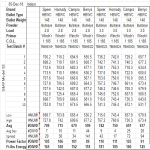I just found something very surprising to me.
I was testing some ammo today as part of a load development. Trying to make full-power 38Spl ammo.
A Hard cast and lubed lead 158SWC and a Plated 158 SWC (Campro).
Lead bullet is .358" and the Campro is .357"
Same brass and primer with same powder charges.
lead bullet - 955 fps campro 765 fps
WTF???
You seen this before? I have used both types of bullets and can't say I have ever noticed a big difference in velocities.
The other thing that came out of this test was the difference in guns. I tested ammo in a Ruger 3" and a Smith 4"
Same ammo: 3" Ruger 982fps 4" Smith 955fps
I know different guns generate different velocities, but to get the higher velocity out of the shorter barrel was surprising.
I was testing some ammo today as part of a load development. Trying to make full-power 38Spl ammo.
A Hard cast and lubed lead 158SWC and a Plated 158 SWC (Campro).
Lead bullet is .358" and the Campro is .357"
Same brass and primer with same powder charges.
lead bullet - 955 fps campro 765 fps
WTF???
You seen this before? I have used both types of bullets and can't say I have ever noticed a big difference in velocities.
The other thing that came out of this test was the difference in guns. I tested ammo in a Ruger 3" and a Smith 4"
Same ammo: 3" Ruger 982fps 4" Smith 955fps
I know different guns generate different velocities, but to get the higher velocity out of the shorter barrel was surprising.
Last edited:








































































